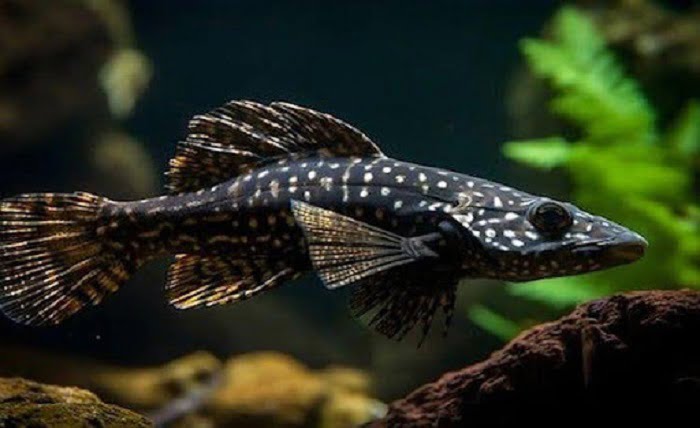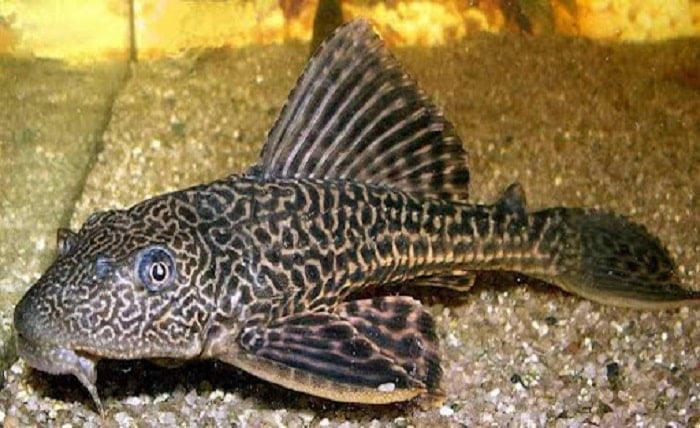Among the azure waters of the tropical oceans, a hidden gem of marine biodiversity exists – the sapu-sapu fish. Although small and seemingly unremarkable , this creature is an essential part of the complex coral reef ecosystem. With its rare visage and complex relations to the surrounding environment, the sapu-sapu fish displays many aspects of the mysteries inherent to the beneath-the-surface world.
Unveiling the Enigma: Introduction to the Sapu-Sapu Fish
The sapu-sapu fish, Parapercis hexophtalma, is a member of the family Pinguipedidae that it inhabits all through the Indo-Pacific. It ranges from just a few inches long and swim with an elongated body covered with exhaustive designs in various hues of brown and beige. Despite its small size, the tapu-tapu gymnurid fish experiences an assortment of adaptations to make its home in the coral reef.Bandar togel
Masters of Camouflage: Blending into the Reef
The most notable characteristic of the sapu-sapu fish is camouflage. It disguises itself so well in the coral reef due to its modeled pattern and disruptive coloration, which is practically the same as the surrounding coral. Thus, the sapu-sapu fish almost merges with the environment . This effect is the key to its successful hunting and the ability to avoid predators.
Hunting Techniques: Ambush Predators of the Reef
The sapu-sapu fish is a small but powerful predator that uses several hunting strategies to capture its prey. The combination of stealth and patience characterizes how sapu-sapu lies in ambush among the reef’s cracks and crevices, using its thin body and a long snout that resembles a pair of tweezers . Once its prey comes in a critical distance, the sapu-sapu darts forward with a sudden acceleration, swallowing it completely. This strategy allows the fish to capture its prey in one swift movement; additionally, it ensures that other reef organisms survive as they eliminate slower and weaker individuals, positively influencing the reef’s population.
Symbiotic Relationships: Guardians of Coral Health
Finally, in addition to being a predator, the sapu-sapu fish takes part in symbiotic relationships that play an important role in the reef’s health. For example, the parasite-eating roles shift in the body of larger reef-dwellers, the groupers and wrasses. For their part, they cannot pick at the pests’ tender bodies, and so the sapu-sapu vinegar fish serves as their cleaning mechanism . By thoroughly removing parasites, the vinegary fish prevents spreading infections and disease among the infected reef fish, creating a more resilient ecosystem as a whole.
Reproductive Behavior: Ensuring Future Generations

The sapu-sapu fish involve complex courtships while breeding, mostly taking place during the warm seasons. The colorful male fish dance to attract partners and fully express their interests in mating . If a suitable female is found, the opposite mates and then the female lays its small eggs in placeholders hidden within the reef. The male thereafter protects the children eggs until they transform into mature fish. The larvae are incubated by the male, and this ensures the survival even if the predator was to identify and eat the eggs of the male, and the chances of developing are high.
Challenges and Conservation: Safeguarding the Sapu-Sapu Fish
Despite the crucial role played by the sapu-sapu fish and their significance to the coral reef ecosystems, the species is threatened by numerous challenges that jeopardize its existence. For instance, overfishing is a critical factor that not only diminishes the number of sapu-sapu fish in the reed but also disrupts the food chain. This causes a ripple effect among other marine species leading to the scarcity of other species and creating a genuine threat to their survival. Habitat destruction is another threat, is caused by destructive fishing practices such a dynamite fishing that destroys the coral reefs.
Guardians of the Underwater Realm
The sapu-sapu fish symbolizes the beauty and complexity of the coral reef and reveals the importance of humans’ approach towards environmental conservation. The camouflage and mimicry skills of the fish enable its survival in the reef, whereas its secretive existence reflects a healthy ecological system. The sapu-sapu is a compelling creature that reveals the interconnectedness between the various living creatures in the marine environment. Many animals and plants in the coral reef exist unidentified, and the sapu-sapu fish represents the importance of their preservation and the need for humans to restore ecological integrity.
Transitioning into Conservation Action: Protecting the Coral Guardian
Considering the urgency of protecting the sapu-sapu fish and their natural habitat, conservation programs have been initiated to counter the factors that endanger these priceless creatures. Various conservation and research organizations and partnering with local communities have developed multiple protocols and initiatives to maintain the coral reef ecosystem and its biodiversity. Key initiatives, such as habitats restoration, fishing quotas, marine sanctuaries, and community-based educational campaigns, involve part more effective ways, monitoring, and knowledge of the marine environment.
Restoring Reef Resilience: Habitat Rehabilitation Projects
One of them is habitat degradation. Coral bleaching, sedimentation, coastal development, and other adverse factors create the least likelihood for coral reefs and their dependent species, which include the sapu-sapu fish. In particular, there is restoration of damaged reef habitats, and coral populations are restored . Coral transplantation, artificial reef formation, and habitat restoration are the methods by which the reef is restructuring and providing a necessary habitat for the sapu-sapu fish feeding and other reef animals are replicated.
Promoting Sustainable Fisheries: Balancing Conservation with Livelihoods
Sustainable fisheries management is crucial to the long-term survival of sapu-sapu fish populations and the people who depend on them for survival and livelihoods. In this sense, authorities can avoid complete sapu-sapu depletion by setting catch limits, size restrictions, and seasonal closures backed by science that prevent overharvesting while allowing wild populations to rebound and maintain overall health. Furthermore, through ecotourism and sustainable aquaculture, alternative economic activities can be used to create significant income while also restricting sapu-sapu pressure to limited levels.
Establishing Marine Protected Areas: Safe Havens for Marine Life
Marine protected areas are instrumental in the conservation of marine biodiversity and the protection of crucial habitats, including coral reefs. Where marine protected areas restrict or prohibit fishing and other harvesting practices, sapu-sapu fish and other reef species find a safe space to recover and multiply their populations, thereby balancing and flourishing the ecosystem. Besides, MPAs have also been important study units, helping researchers develop an understanding of the sapu-sapu fish’s ecology and behavioral traits in preparation for conservation action.
Empowering Local Communities: Building Partnerships for Conservation
Local communities play a fundamental role in the promotion of local marine conservation as they hold critical and historically accrued knowledge of the coastal environments and supportive ecosystems. When local communities are actively involved in the conservation planning and decision-making process, they develop agency, leading to increased responsibility and ownership of the marine resources, which enhances responsible governance and more efficient and sustainable conservation. Community-based programs, including the co-managed monitoring systems and sustainable fishing development cooperatives , allow each person to become an active influencer in the struggle to conserve the natural heritage and the legacy of the sapu-sapu fish.
A Call to Action for Ocean Stewardship
The sapu-sapu fish is one of the many imperiled species of coral reef ecosystems. In this interconnected system of life, every creature plays an integral part in the reformation, balance, and resilience of the marine world. The fish, with its meek presence and intrinsic significance, is a poignant representation of the connection between all sea creatures. As stewards of the ocean, it is our duty to uphold this noble creature’s influence by safeguarding diverse ecosystems. Thus, the legacy of the sapu-sapu fish and millions of underwater lights and their ecologies can be mirrored honorably for the present and future generations to witness and emulate. Through united efforts, science, creativity, and dedication to continuous conservation, great things will be achieved.








